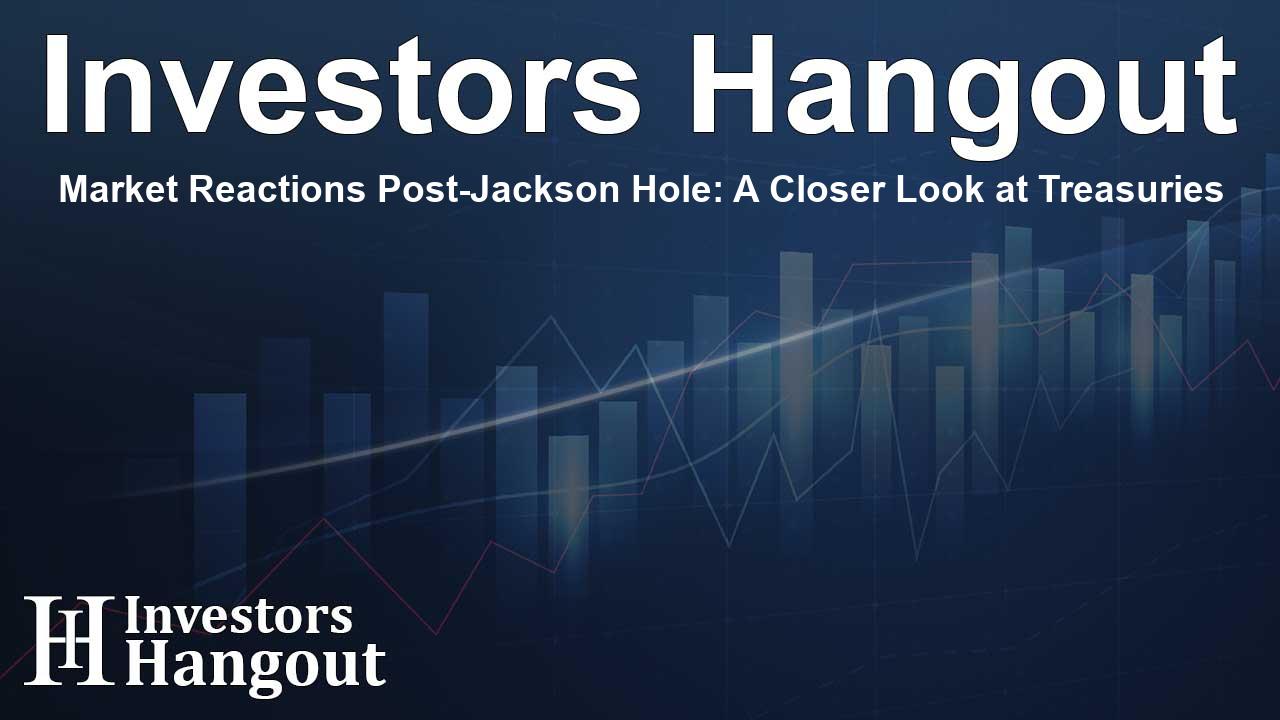Market Reactions Post-Jackson Hole: A Closer Look at Treasuries

The Impact of the Jackson Hole Meeting on Market Dynamics
The Jackson Hole meeting recently highlighted important discussions led by Fed Chair Powell regarding interest rates. On August 22, he announced that while rates would remain stable, there was the potential for future cuts. This seemingly static stance prompted immediate reactions from the market. A noteworthy example was the U.S. 10-year Treasury yield, which dropped from 4.31% to 4.25% during his address.
Understanding the Shifts in Bond Yields
One critical insight to consider is that a decrease in yields typically correlates with an increase in bond demand. The inverse relationship between bond yields and bond prices means that heightened institutional purchases drive prices up and result in lower yields. Thus, the swift decline in yields can signify a rush of institutional buying based on anticipated rate cuts. This development emphasizes the need to examine market sentiment and institutional cash flow following the event.
Analyzing Institutional Buying Patterns
It is essential to note that the surge in Treasury purchases before and after the Jackson Hole meeting was a strategic move. Major players, such as global macro funds and hedge funds, acted preemptively. Leading up to Powell’s remarks, these institutions had already expanded their long positions in Treasuries, banking on prospects of interest rate reductions. Data from the CME FedWatch tool indicates that the markets have been pricing in a high likelihood of rate cuts since the release of the July employment report.
The Role of Local Institutions
Local institutions, including pension funds and insurance companies, also entered the market but approached their investments more cautiously. Their purchases were primarily aimed at asset-liability management (ALM), aligning liabilities with long-term assets. This defensive buying, in conjunction with the anticipated rate cuts, intensified the drop in yields.
Quantitative Fund Dynamics
Quantitative funds seemingly followed suit as soon as their models identified the downward trend in yields. They quickly shifted towards growth stock index futures, not merely as trend-followers but rather as algorithmic traders adjusting positions based on bond pricing signals and equity sector rotations. Consequently, this movement in Treasuries positively influenced tech and semiconductor stocks, corroborated by TradePulse ETF charts showing institutional inflows into growth-focused ETFs around the same date.
Navigating Caution with Institutional Flows
Despite these positive developments, a note of caution is necessary. Institutional flows should not be misconstrued as guaranteeing long-term market direction. Some of these moves may represent hedging strategies or short-covering tactics that could be transient. For retail investors, it's advisable to interpret these trends as short-lived responses to the speculation surrounding rate cuts, especially with the upcoming September rate announcement just around the corner.
Leveraging Market Trends for Investment Strategies
Ultimately, while the Jackson Hole meeting didn't alter the current economic policies, it did push the market into an atmosphere of increased conviction regarding rate cuts. Institutions led the charge into Treasuries, which in turn caused a ripple effect into equities, particularly growth stock ETFs. Retail investors should strive to align their strategies with institutional flows but should manage risks and adopt a staggered entry approach in light of the ongoing uncertainties.
The Significance of Treasury Yields
Treasury yields serve as an invaluable gauge for assessing institutional sentiment. The 10-year yield specifically is pivotal for understanding market movements as it often trends ahead of Federal Reserve events. Observing yields ahead of such announcements can provide insights on potential post-event market direction.
Growth Stocks and Institutional Exposure
In a cycle characterized by anticipated rate cuts, sectors sensitive to interest rates, including Big Tech, AI, and semiconductors, stand to benefit considerably. Recent data indicates that institutional investors have aggressively invested in growth-oriented ETFs, suggesting a strategy to mitigate risks while capitalizing on potential upside opportunities.
Frequently Asked Questions
What were the main outcomes of the Jackson Hole meeting?
The meeting emphasized a potential shift toward rate cuts while leaving interest rates stable for the moment, which influenced market sentiments significantly.
How do bond yields affect the stock market?
Bond yields typically demonstrate an inverse relationship to bond prices; thus, falling yields can lead to increased demand for bonds while potentially spurring growth in the stock market.
What indicators suggest institutional buying of Treasuries?
A noticeable decrease in Treasury yields preceding significant events, such as Fed meetings, can indicate that institutions are buying bonds, anticipating market direction changes.
Should retail investors mimic institutional behaviors?
While aligning with institutional flows can be advantageous, retail investors should manage their risks effectively and not solely follow institutional trading patterns.
Why is monitoring Treasury yields important?
Observing Treasury yields before key announcements serves as a roadmap for potential market movements, offering insights into institutional investors' strategies and expectations.
About The Author
Contact Caleb Price privately here. Or send an email with ATTN: Caleb Price as the subject to contact@investorshangout.com.
About Investors Hangout
Investors Hangout is a leading online stock forum for financial discussion and learning, offering a wide range of free tools and resources. It draws in traders of all levels, who exchange market knowledge, investigate trading tactics, and keep an eye on industry developments in real time. Featuring financial articles, stock message boards, quotes, charts, company profiles, and live news updates. Through cooperative learning and a wealth of informational resources, it helps users from novices creating their first portfolios to experts honing their techniques. Join Investors Hangout today: https://investorshangout.com/
The content of this article is based on factual, publicly available information and does not represent legal, financial, or investment advice. Investors Hangout does not offer financial advice, and the author is not a licensed financial advisor. Consult a qualified advisor before making any financial or investment decisions based on this article. This article should not be considered advice to purchase, sell, or hold any securities or other investments. If any of the material provided here is inaccurate, please contact us for corrections.
